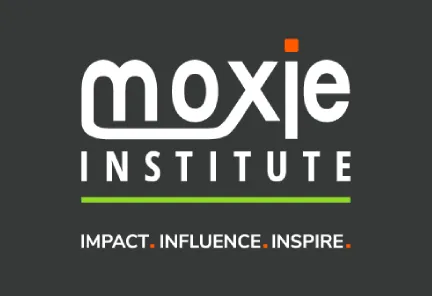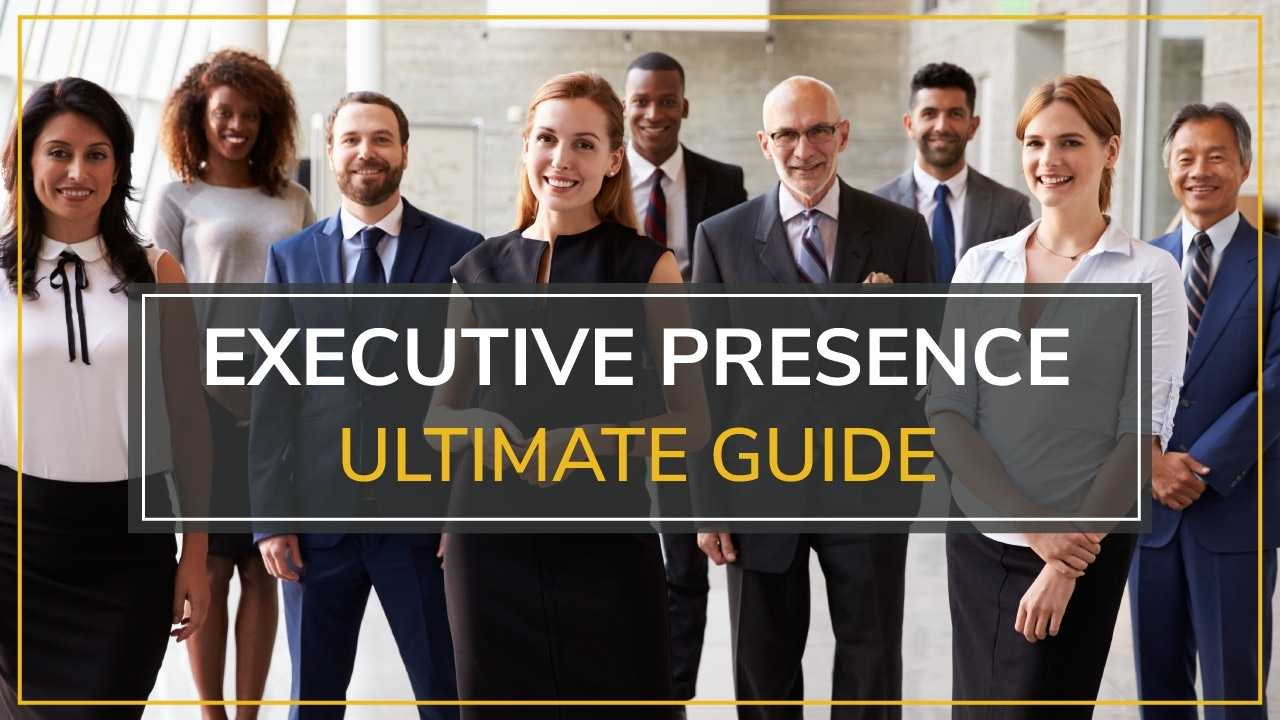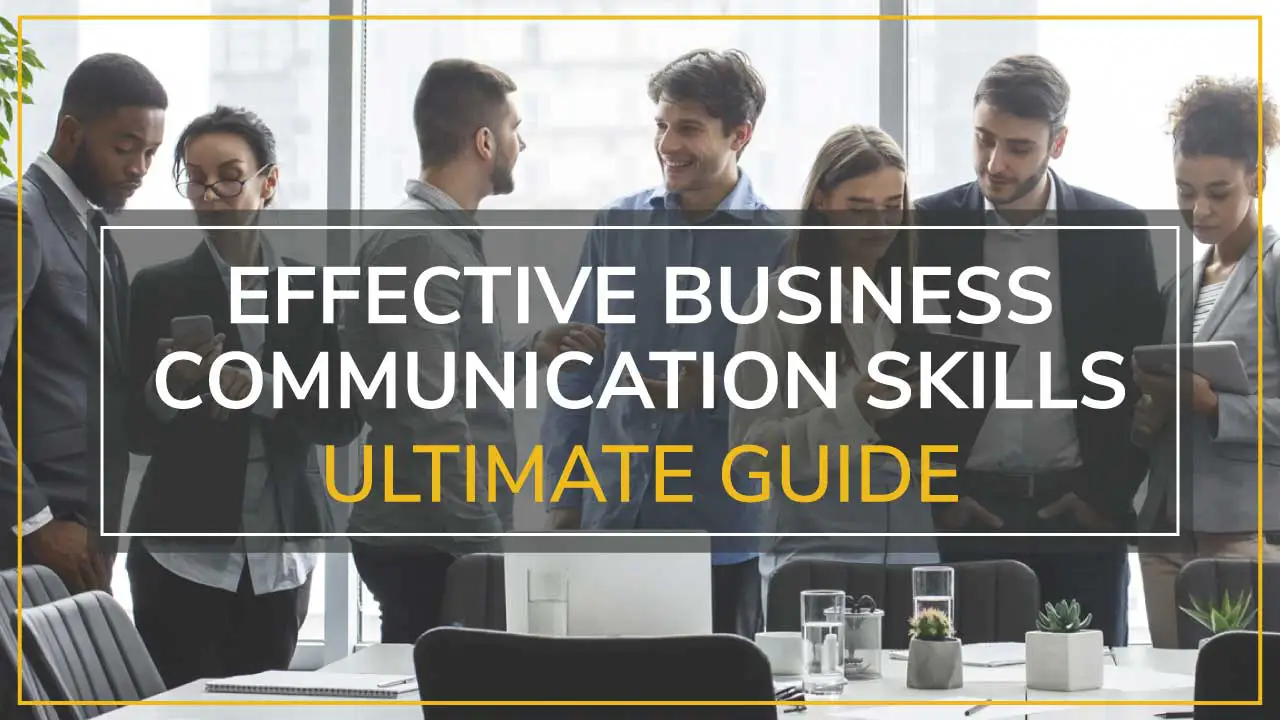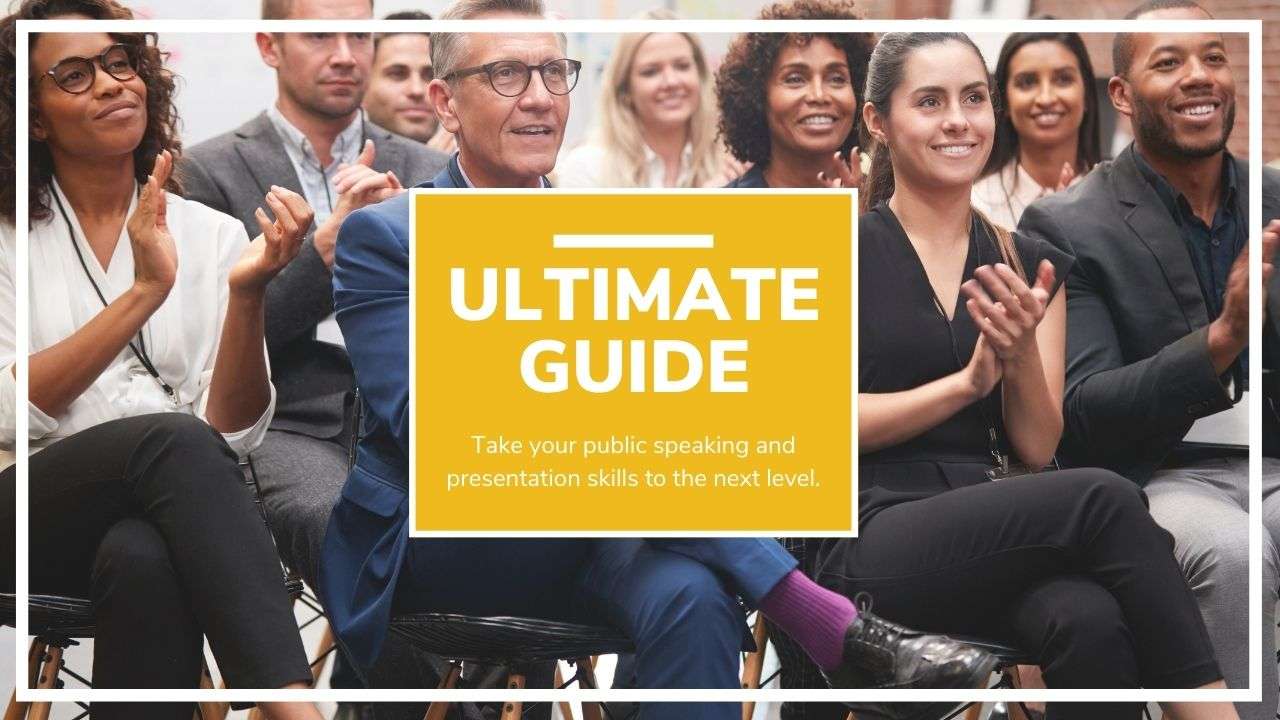Introduction: Mastering Speech Memorization
Have you ever seen a presenter lead a room with so much presence and flow that you wondered if they were just born with it? The reality is much more affirming — successful public speaking is learned, and memorization is often the secret ingredient to that seemingly effortless performance.
The key to learning how to memorize a speech, then, isn’t as much about your capacity for rote repetition as it is about harnessing the power of memory science and using it to your advantage on the big day to turn a once anxiety-provoking ordeal into an opportunity to shine. At Moxie Institute, we have helped thousands of professionals – from Fortune 500 execs to TED speakers – tackle this transformation process with our extensive public speaking tips.
In this complete guide, we’re going to share the science-proven memory techniques that have helped our clients to stand up and deliver strong, fear-free presentations. Whether you have a keynote to give, a high-stakes board presentation to deliver, or a career-defining pitch to make, these are the methods you need to transform your content into content that you absolutely own, freeing you up to focus on relationship building and putting a stake in the heart of your insecurities about remembering the next point you need to say. For individuals looking for private instruction, you may find our speech coach will be able to help you specifically with your presentation after the workshop.
Why Memorizing Your Speech Matters
Not only does memorizing your speech correctly not result in robotic delivery, it results in the opposite. As we’ve coached business leaders across all industries, we’ve seen that good memorization is an asset for delivering points powerfully and naturally. This critical base is stressed in our complete presentation training course.
The Science Behind Effective Memorization
Here’s why learning to memorize will change the way you present: The science of memory explains how to become a confident, compelling presenter. Research from Stanford University’s Memory Laboratory shows that when content is encoded deeply into our long-term memory, it takes less cognitive effort to pull out, allowing more mental resources to connect and engage with an audience.
Research on cognitive load theory shows that speakers can relax from the anxiety of performance if they have a well-memorised presentation and thereby are better able to express their presentation. This is because working memory — our limited mental work space — is often freed up from thinking about the content and is available to focus on delivery, audience moment-to-moment reactions and being your authentic self.
When we train high-performing executives, we routinely see that deep memorization allows for:
- More looking into the eyes of the audience members
- Better, organic gestures and movement
- Better vocal coloration and expression
- A bit more responsive to live audience feedback
- Increased self-assurance and less nervousness
When to Memorize vs. When to Use Notes
You don’t have to memorize everything you want to say in every speaking context. Through our practice with Fortune 500 executives, we’ve honed in on when full memorization works best:
Fully memorize when:
- Delivering high-stakes presentations (IPO pitches, board meetings, keynotes)
- Giving TED-style talks or inspirational speeches
- Speaking in situations with strict time constraints
- Presenting content that requires precise language (legal, medical, technical)
- Appearing on camera or in media interviews
Consider using minimal notes when:
- Presenting highly technical data or complex statistics
- Delivering lengthy presentations (over 45 minutes)
- Speaking on panels where flexible response is needed
- Leading interactive workshops or training sessions
- Working with frequently changing information
Memory Mastery Insight: Even when using notes, we suggest that you commit your opener, transitions, stories and the closer to memory word-for-word. It is a solid structure with some room to maneuver in the techy bits. For business leaders who are getting ready for high-stakes presentations, a public speaking coach can help you master these skills and come up with a personalized memorization system.
The Memory Palace Technique: A Neuroscience-Based Approach
The Memory Palace (also known as the Method of Loci) — a visualization technique we teach at Moxie Institute — is one of the strongest memory strategies we can use, and it’s a technique used by both Greek and Roman orators, and one that has been scientifically proven through modern neuroscience.
How to Build Your First Memory Palace
The Memory Palace tool capitalizes on your mind’s remarkable capacity to recall place and image. Here’s how you can build your first memory palace for memorizing speeches:
- Select a familiar location – Choose somewhere you’re familiar with — such as your home or office, or a regular walking route.
- Identify distinct locations – Sketch 5-10 locations in one place (such as front door, kitchen sink, bookshelf).
- Establish a consistent path – Make it easy to follow the path from one place to another.
- Visualize with vivid detail – For every place, imagine comfortable detailed images.
- Practice the route – Walk around your palace until your route is automatic.
Try It Now Exercise: Your First Memory Palace
Take 5 minutes to draw up a basic floor plan of a space you know (your home is a good place to start). Indicate 5-7 discrete spots in a row. Close your eyes and imagine walking along this path mentally three times, paying attention to something at each place.
Applying Memory Palaces to Speech Content
With your memory palace now created you can now put it to work for learning a speech with incredible ease:
- Divide your speech into sections – Chunk your speech into logical parts (opening, content, stories, closing).
- Assign each section to a location – For each piece of speech divide them into certain locations in your memory palace.
- Create vivid, unusual images – For each location, imagine brightly colored odd images, which are associated with what you want to remember.
- Connect images to specific language – Associate your mental picture with the exact words you wish to say.
- Practice the journey – In your mind, pace your palace and pick up all the parts of your speech along the way.
For instance, if your speech begins with statistics on communication effectiveness, you can conjure up a mental image of huge percentage figures floating at your doorstep, and those particular percentages could be very sharp and clear.
One of the C.E.O.s we trained, for instance, leveraged his childhood home to serve as a memory palace for a high-stakes investor presentation. Key metrics were colorful balloons in the entryway, the company’s growth strategy was a board game on the kitchen table, and customer testimonials were family photos in the hallway. They came away with $12 million in financing and one thing that stood out, he said, was his assured note-free delivery.
Pro Tip: The more wacky or emotional or hysterical or just whatever — the more unconventional your visualizations, the more memorable they will be. Your brain values new and emotionally poignant information, which means you are going to remember these images much more easily when stressed. We know from our years of public speaking experience that these strong mental pictures are one of the very best memory aids you can use for major presentations.
Breaking Down Your Speech for Easier Memorization
One of the biggest mistakes we observe with even the most experienced of presenters is trying to remember whole speeches as a single piece. Based on our work with thousands of practitioners in the field, strategic communication by way of speech segmentation yields far higher retention and recall.
The Chunking Method: Making Large Speeches Manageable
Chunking is based on the fact that our brain naturally groups information which helps to process and recall large amounts of information. Studying databases in cognitive psychology have demonstrated that if you can chunk information into optimal patterns you can expand your memory by as much as 200-300%.
Here’s what we do every time in our proven chunking process for memorizing speeches:
- Identify natural breaks – Break your presentation down into a few natural segments (usually 5-7 major points).
- Create meaningful subsections – Divide your major talking points into 2-3 small portions.
- Keep chunks to 30-60 seconds – It is essential that they are short enough for you to be able to remember the entire fact block.
- Practice each chunk separately – Master individual sections before connecting them.
- Progressively combine chunks – Gradually link sections together as you build proficiency.
Memory Enhancement Technique: After mastering individual chunks, practice starting from any random section. This develops agile recall skills, and gets you prepared for possible interruptions in delivery.
Creating Memorable Transitions Between Sections
It is a common battle ground for where memorized speeches fall apart. In my executive coaching sessions, we focus on building robust connective tissue between chunks with the following proven approaches:
- Develop transition phrases – Make it clear that you are moving onto the next section not only with your body movements, but with your words too (E.g. “Now that we’ve looked at the problem, let’s go to the solution”).
- Use visual anchors – Bookmark several visuals in your memory palace for the points of transition.
- Implement physical anchors – Whenever you do certain movements or position on the stage, they call back to the next section.
- Employ rhythmic patterns – Shifts in the rhythm of speaking help indicate a change in tone to yourself and your listeners.
- Utilize parallel structure – When ideas are worded similarly, memorization patterns are created at the transition points.
One candidate for office we trained used physical anchoring, by linking different policy points to a shift of stance on the stage. Health care was discussed stage left, economic policy stage center and education stage right. The choreographed movements acted as physical memory triggers and also offered visual structure for the audience.
Multimodal Rehearsal Strategies
Through performance psychology and neuroscience, we’ve discovered that by activating more sensory channels, speech memorization skyrockets. Such a strategy also takes advantage of the brain’s multiple interlinked memory systems to establish such redundant encoding routes.
Visual Rehearsal Techniques
We have very strong visual memories for most of us. Use these strengths to your advantage:
- Color-coding – Try to use different colours of text for different sections when you are taking notes or using slides in your talk.
- Mind mapping – Visual diagrams to illustrate the relationships between your main points.
- Typography differentiation – Introduce different fonts, sizes and styles, so sections easily stand out.
- Visual presentation – Develop slide images to act as memory stimulants for various content.
- Rehearsing with visualization – Rehearse “seeing” memory palace and speech imagery with eyes shut.
Quick Implementation Tactic: Take your speech outline and create a colour coded mind map of the sections and their relationships. This visualization tends to show some logical relationships that reinforce both memorization and delivery. For more presentation tips that enhance your overall delivery, explore our comprehensive resources.
Auditory Memorization Methods
Auditory strategies work especially well with verbally strong processors:
- Record and review – Record yourself giving the speech and listen back while commuting or exercising.
- Varied intonation practice – Reiterate the same text, placing the emotional center on different words or word groups.
- Musical anchors – Link different speech sections to a certain track or a piece of music that will activate your memory.
- Rhythmic encoding – Embed low-level rhythmic patterns in your keyword lists to make them more memorable.
- Verbalization routines – Set up fixed times when the material is recited out loud.
Pro Tip From Our Speech Coaches: When recording your speech, make one recording at normal pace and two at the following: accelerated pace and exaggerated vocal variety. This combination allows for superior memorization and delivery flexibility.
Kinesthetic Approaches to Locking in Content
Physical movement creates powerful memory associations that can significantly enhance recall:
- Gesture anchoring – Form hand movements tied to anchor points.
- Movement mapping – Sketch out planned stage movements to correlate with sections of speech.
- Object association – Touch objects or manipulate objects that stand in for elements.
- Standing vs. sitting practice – Move between sitting and standing at rehearsal.
- Walking practice – Practice when walking on a designated route to form motion-content links.
We’ll even combine them when coaching you in executive speech. One CFO at a Fortune 100 company we worked with used to really struggle to remember his detailed financial projections until we took a holistic approach: color coding his script, creating particular gestures for growth metrics, and having him practice while walking a memorised route through his office. The outcome was a polished, self-assured shareholder presentation that felt totally organic, despite the specific numbers and projections. If you’re an executive who is about to go on TV or radio, our targeted media training involves the same methods.
Common Memorization Pitfalls and How to Overcome Them

Even using the best memorization methods, there are certain challenges that speakers typically face when memorizing. Here are the most common memorization challenges and the solutions we’ve found through our work with thousands of professionals:
Pitfall #1: The Perfectionism Trap Challenge: Aiming for word-perfect recall causes anxiety, which impairs memory. Solution: Work towards “content-perfect,” not “word-perfect” memorization. Learn your phrases and transitions by rote, but be flexible with the language in between.
Pitfall #2: Insufficient Context Building Challenge: Not grasping the background of a word leaves it at risk of total recall collapse. Solution: First of all, think about a logical approach before you begin memorizing. Why do these points follow each other? This means that each of your memories has many pathways to retrieval.
Pitfall #3: One-Dimensional Rehearsal Challenge: Practicing in one modality or environment makes for context-dependent memory. Solution: Practice in lots of different places, positions, and mental states. It produces context-independent recall that’s more pressure-proof.
Pitfall #4: The Cramming Effect Challenge: 11th-hour memorization leads to shallow encoding that crumbles under pressure. Solution: Do spaced repetition, practice in shorter chunks (15-30 minutes) spread over days or weeks, not all in one (marathon) session.
Pitfall #5: Skipping Full-Through Practices Challenge: Not doing full run-throughs often enough, if at all. Solution: While the chunks are brilliant for getting something into your head at the very beginning, complete run-throughs are vital for developing transitions and flow.
Pitfall #6: Neglecting Recovery Strategies Challenge: The fear of forgetting causes anxiety, which is a prime factor in causing memory lapses. Solution: Work on learning the various recovery strategies we’ll cover in our next section to develop confidence in your ability to smoothly respond to memory slips.
Memory Challenge-Busting Insight: In our speaker coaching work, we’ve found that the most effective memorizers have a growth mindset about memory. They think of forgetting not as a fiasco but as valuable feedback, involving each lapse as a gentle cue to improve their memory systems. If you’re not somebody who’s good at remembering, especially if you’re working on a talk that you know is really, really important, you might want to consider enlisting the help of our professional speech writers to write your key content in a way that people will remember from the moment the words hit their ears.
Recovery Strategies: What to Do When You Forget

Even the best laid plans of speakers sometimes go awry. The distinction isn’t that professionals never forget — it’s that when they do, they pick themselves back up again with alacrity. We teach these recovery strategies:
- The Bridge Technique: Develop transitional bridge sentences that can span from any single-point to two-point idea in your presentation. With these universal bridges you can move ahead and pick up seamlessly from any point, even if you blow right past all this content.
Example: “Which takes us to another vital point…” or “In response to what we’ve been talking about…”
- The Recap Method: Recap the point you’ve just made so you can buy yourself some time to remember the next point to make.
Example: “So we’ve been looking for improvement in performance with memory techniques. Now let’s examine…”
- The Question Pivot: Suddenly turn to the audience with a question you didn’t want them to ask, which is actually related to your previous punchline, allowing you some time to straighten yourself out.
Example: “How many of you have faced this in your presentations?”
- The Planned Pause: Include dramatic pauses that double as cues to remember.
Example: Lock eyes, take a purposeful sip of water, and go.
- The Bookmark Technique: Give yourself permission to add what you want, proceed, and come back if it occurs to you later.
Example: “Another example that will illustrate this perfectly… I will share that example with you in a second. First, let’s explore…”
- The Presentation Aid Return: Refer to your slide, demo, or some visual aid to get back to where you are.
Example: “You’ve seen that here in this graph…” (allowing yourself to re-center there)
Resilience-Building Practice: In my executive coaching program, for the purposes of hardening your resilience response, I cause distraction to happen during the rehearsal on purpose. We could interject with questions, introduce technical problems, or have presenters skip parts and proceed. That “disruption inoculation” is helping people feel more confident in their ability to recover.
Advanced Memorization Techniques for High-Stakes Presentations
For presentations that really, absolutely need to be critically important — let’s say for IPO pitches, major keynotes, TED talks and product launches — we will deploy these advanced memory enhancement strategies with our top-level clients:
- Mental Dress Rehearsal: Imagine yourself, the night before falling asleep, giving the complete presentation successfully from the opening to the close. Exercise in Sports Psychology has demonstrated that mental rehearsal of a skill engages many of the same neural pathways that actual practice of the skill does, effectively doubling your rehearsal time.
- The Memorization Grid System: Write up a grid with ‘parts of your speech’ on the x-axis and types of practice on the y-axis (recall written, recall spoken, recall with images, recall without images). Tick through a combination once you have it mastered, so you know you have all bases covered thoroughly.
- The Spaced Repetition Protocol: Concentrate more time on, as opposed to equal practice of all the sections:
- Opening and closing (first/last impression)
- Transitions between sections (where most lapses occur)
- Technically complex segments (statistics, complex concepts)
- Emotionally significant moments (stories, calls to action)
- Environmental Context Matching: Practice in the environment where you will be speaking (or as close to that environment as possible):
- Standing/sitting position
- Room size and acoustics
- Lighting conditions
- Technical setup
- Clothing/footwear you’ll wear during the actual presentation
- Stress Inoculation Training: Deliberately rehearse tough until you get tough:
- With artificial time constraints
- After physical exercise (elevated heart rate)
- With background distractions
- In front of increasingly challenging audiences
- With intentional interruptions
Expert Implementation Insight: One C-suite executive we coached used stress inoculation for a critical investor presentation by practicing his pitch while his team randomly interrupted with challenging questions. That prepared him for the actual high-pressure Q&A and his confidence level skyrocketed.
Your Speech Memorization Action Plan
From our work training thousands of speakers, here is a tested 7-day plan to help you memorize a 15-20 minute speech in one week:
Day 1: Foundation Building
- Finalize your content (script, slides, key points)
- Create your memory palace structure
- Divide speech into logical chunks
- Develop key transition phrases
- Record a reference version of your full speech
If you’re creating a presentation from scratch and need expert assistance, our speech writing services can help craft memorable, impactful content tailored to your specific audience and objectives.
Day 2: Initial Memorization (Focus on Structure)
- Morning: Memorize your introduction word-for-word
- Afternoon: Work on main content sections using chunking
- Evening: Memorize conclusion word-for-word
- Throughout day: Listen to your recording during breaks
Day 3: Deepening Memory Encoding
- Practice recall of entire content without notes
- Identify weak spots and strengthen with visualization
- Create mind map of entire presentation
- Record yourself again and compare to original
Day 4: Multimodal Enhancement
- Morning: Visual practice with slides/notes
- Afternoon: Audio practice (record and review)
- Evening: Kinesthetic practice (with movement)
- Record a new version incorporating improvements
Day 5: Context Variation
- Practice in different locations
- Practice standing and sitting
- Practice with and without visual aids
- Practice with simulated distractions
Day 6: Integration and Flow Development
- Multiple complete run-throughs
- Focus on smooth transitions
- Record and review for natural delivery
- Practice recovery techniques at transition points
Day 7: Performance Readiness
- Morning: Two full-energy run-throughs
- Afternoon: Rest voice and mind
- Evening: One final full run-through
- Mentally rehearse success before sleep
Strategic Memory Reinforcement: The day of your presentation, review the memory palace and key visuals, but don’t try to “walk through” the whole speech. Just a look again at your opening, some of your connecting parts and your conclusion. Believe in the memorization practice you have done — cramming at the last minute usually adds anxiety, not confidence.
Frequently Asked Questions
What’s the most effective way to memorize a speech in a short amount of time?
Tactics to Effective Rapid Memorization A combination of chunking and spaced repetition is the most efficient way to rapidly memorize. Divide your speech into smaller portions (30-60 second) and memorize each one in isolation, then start to connect them. Practice in short spurts throughout the day (15-30 minutes) instead of one long practice. The spacing effect produces memory traces that are up to 90% less prone to forgetting than those of massed practice (cramming): evidence from a repeated memory task study published in the Psychological Science journal.
And, for the most time-crunched deadlines, commit to memory your intro, conclusion and your most important transitions word-for-word and sufficiently familiarize yourself with the general trajectory of the rest.
How can I memorize a speech without sounding robotic?
One of the most frequent concerns that our clients have is about sounding natural. The trick is to understand the line between memorization and internalization. When the content gets in your blood, the performance takes care of itself. To achieve this:
- Memorize the ideas before the specific language
- Practice with varied emotional emphasis and pacing
- Record yourself and listen for unnatural patterns
- Incorporate natural gestures and movements during memorization
- Memorize slightly more content than you need, creating flexibility
When coaching executives, we have found that the most natural-sounding executives have rehearsed their content 15-20 times, past the point when their awareness is required to recall the information.
What’s the difference between memorizing a prepared speech versus speaking extemporaneously?
Prepared speeches and extemporaneous speaking exist on a continuum rather than as opposing approaches:
Prepared/Memorized Speeches:
- Permit specific language and timing
- Allow for complex, nuanced discussion
- Ensure that all major points are covered
- Decrease mental fatigue while on delivery
- Perfect for high-stake presentations under pressure
Extemporaneous Speaking:
- Offers flexibility and adaptability
- Can sound a bit more colloquial
- Facilitates on-the-fly audience adjustment
- Works better for interactive formats
- Great for familiar topics and Q&A’s
Many of our most successful clients take a hybrid approach: that is, they have memorized verbatim their opening, stories, key data points, transitions, and closer, and allowed organic language in the explanatory sections of their presentation.
How do I handle nervousness that makes me forget my speech?
Stage fright arouses the sympathetic nervous system and may disrupt recall of memorized information. Our speech coaches advise using these evidence-based strategies:
- Preparation buffer: Learn 120% of what you need to—it helps to reduce anxiety about forgetting.
- Controlled breathing: Try 4-7-8 breath before you begin (breathe in for 4, hold it for 7, breath out for 8)
- Cognitive reframing: Reinterpret nervousness as thrill, not dread
- Visualization: Imagining successful delivery, particularly in the presentation space.
- Physical preparation: Focus on sleeping, hydrating and avoiding caffeine to eliminate general stress.
For clients with significant performance anxiety, we suggest a method known as “mental contrasting”—imagine your successful acting performance and the potential obstacles you may face, and mentally rehearse how you will handle those obstacles. Studies show this technique develops more resilient confidence than positive visualization alone.
Should I memorize my speech word-for-word or just the key points?
The best solution would be one of the following depending on considerations:
Consider full memorization when:
- Doing high stakes presentations (TED talks, keynotes, big pitches)
- Time constraints are strict
- Precise language is critical
- You have enough scheduled lead-in duty period
Consider key-point memorization when:
- Communicating highly technical content that is continually updated
- Speaking in interactive formats
- Time allotment is flexible
- You’re deeply familiar with the subject matter
Based on our work with thousands of speakers, we strongly believe that memorizing your stories, stats, transition language, and some key phrases, and speaking in a more spontaneous style when it comes to your natural language between your key points, gives you the ideal balance of preparation and authenticity the vast majority of the time, especially in a business setting.
How can I tell if I’ve practiced enough to have my speech fully memorized?
You’re done memorizing when:
- You can give the complete talk without notes at least 3 times.
- You can begin with any section and move ahead.
- You’ll still remember where you left off sparking distractions.
- Your delivery sounds conversational rather than recited.
- You can maintain appropriate eye contact throughout.
- You can change pace without changing content.
Brain-Based Insight: Total memorization often has more of a “breakthrough” (as opposed to a “yes this is clear progress”) pattern than a curve of slow increases. Many clients say they practiced their memory without much gain, but suddenly, the ability to recall leaps up—usually after a night of sleep. This shows how sleep aids memory consolidation, transforming short-term remembering into long-term encoding.
What are the best memory techniques for memorizing statistics and data for presentations?
Specific numbers and amounts can only be remembered properly through trained memory techniques:
- Story integration: Statistics in the context of vivid stories
- Visual anchoring: vivid images, such as seeing 87% as a thermometer that is close to boiling.
- Personal associations: Qualify numbers by making them personal to the reader’s experience (1.47 billion = “one building for every person in China”)
- Chunking: Organise numbers into coloured clusters (eg remember 19452008 as 1945-2008, years of significance)
- Number-shape system: Associate number images with shapes (e.g., 2=swan, 8=snowman)
If you have a really difficult data set, we tend to want to memorize endless tables, charts and visuals — we say, don’t do it but perhaps you could use a greatly diminished set of charts just to aid your memory better to allow you to focus on the meaning, not precise figures.
How do I recover smoothly if I forget part of my memorized speech?
Even native speakers sometimes lose their place in this way. Practice these recovery methods:
- Bridge phrases: Write out transitional statements that can go between any two points.
- Bookmark technique: Make note of the fact you are leaving out a point and will come back to it
- Paraphrase pivoting: Paraphrase your last idea using distinct words as you reactivate your memory
- Question insertion: Ask the audience a pertinent question to give them a moment to think.
- Slide reference: Go back to your visual aid to get yourself back on track.
- Planned pause: A well-timed silence, presented with confident body language–gives people a moment to refresh themselves.
The catch is that you have to prepare these recovery plans ahead of time, and you have to rehearse them. This helps build confidence that you can deal with memory lapses in stride, which ironically makes them less likely to happen.
What’s the most common mistake people make when memorizing speeches?
According to our experience coaching thousands of speakers, the memorization mistake that is most harmful is practicing by rote memory without cognitive involvement. Most speakers just repeat their talks over and over, hiding their insecurity and worrying about the downside if they deliver a less-than-stellar performance.
Studies have demonstrated that one repetition with deep processing creates stronger memory traces than 5 repetitions with shallow processing.
Some other errors that people make are:
- Leaving to the last minute (overpressure)
- Thinking of words, not ideas or structure
- Only practising in ‘perfect’ conditions (forms a context bound memory)
- Failure to formulate recovery plans
- Cheating oneself by leaning too heavily on slides or notes as memory aids
How can I maintain eye contact with my audience if I’m trying to remember my speech?
Making good eye contact when delivering a memorized piece takes some preparation:
- Memory palace placement: Drape your memory triggers on middle distance, don’t look down or up to “see” them
- Visual anchoring: Connect aspects of the room with each section of content.
- Audience section technique: Link certain content features with specific sections of the audience
- Gesture-gaze coordination: Use your organic actions as opportunities to reset your eyes on new parts of the audience
- Eye contact patterning: rehearse intentional eye-contact motifs
One technique we teach executives is the “lighthouse method” — methodically scanning the edges of the audience in a slow, calculated rotation and making eye contact with people for 3-5 seconds before shifting your gaze. This forms a connection and allows for your memory retrieval system to start up. For even more help on nailing all facets of professional presentations, check out our guide to public speaking tips.
TAKE THE FIRST STEP TO MASTER POWERFUL NEW SKILLS
Schedule an easy 30-minute call using our using our calendar. We’re here to help!









